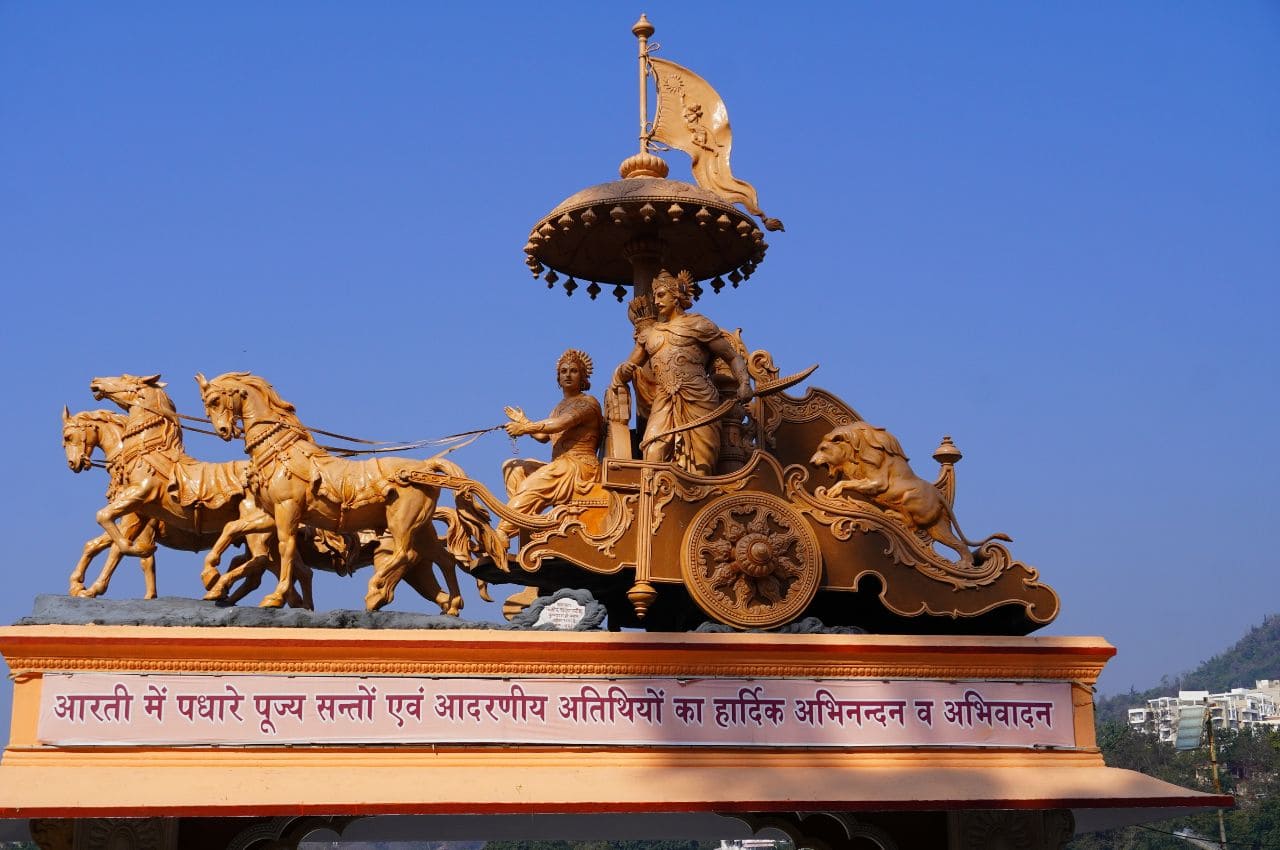
Table of Contents
“Whatever is here, may be found elsewhere; what is not cannot be found anywhere else.”
Epilogue to the Mahabharata
The Mahabharata. Often referred to as the longest poem in world literature, it was fundamental in creating the “Hindu” culture of India. Written in Sanskrit, this ancient Indian epic has over 200,000 individual verse lines, making it roughly ten times the length of the Iliad and the Odyssey combined.
But what is this grand narrative really about and why is it so important to Hindus?
What Is the Mahabharata About?
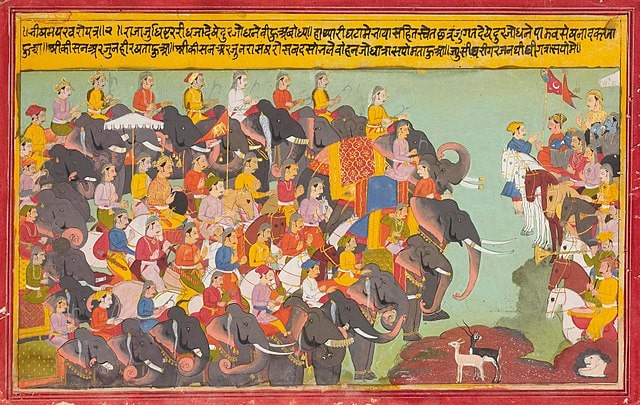
According to the Britannica, “The Mahabharata is an important source of information on the development of Hinduism between 400 BCE and 200 CE and is regarded by Hindus as both a text about dharma (Hindu moral law) and a history.”
At its heart, it’s the story of a succession struggle for the throne of Hastinapura, between two branches of the Kuru family: the Pandavas and the Kauravas. These cousins, due to misunderstandings, envy, and the manipulation of others, end up in a great war at Kurukshetra.
This may have actually been a historical war, much like the Trojan War of ancient Greece. But there have been so many embellishments over the centuries, that it’s now become legend.
1. The Beginning
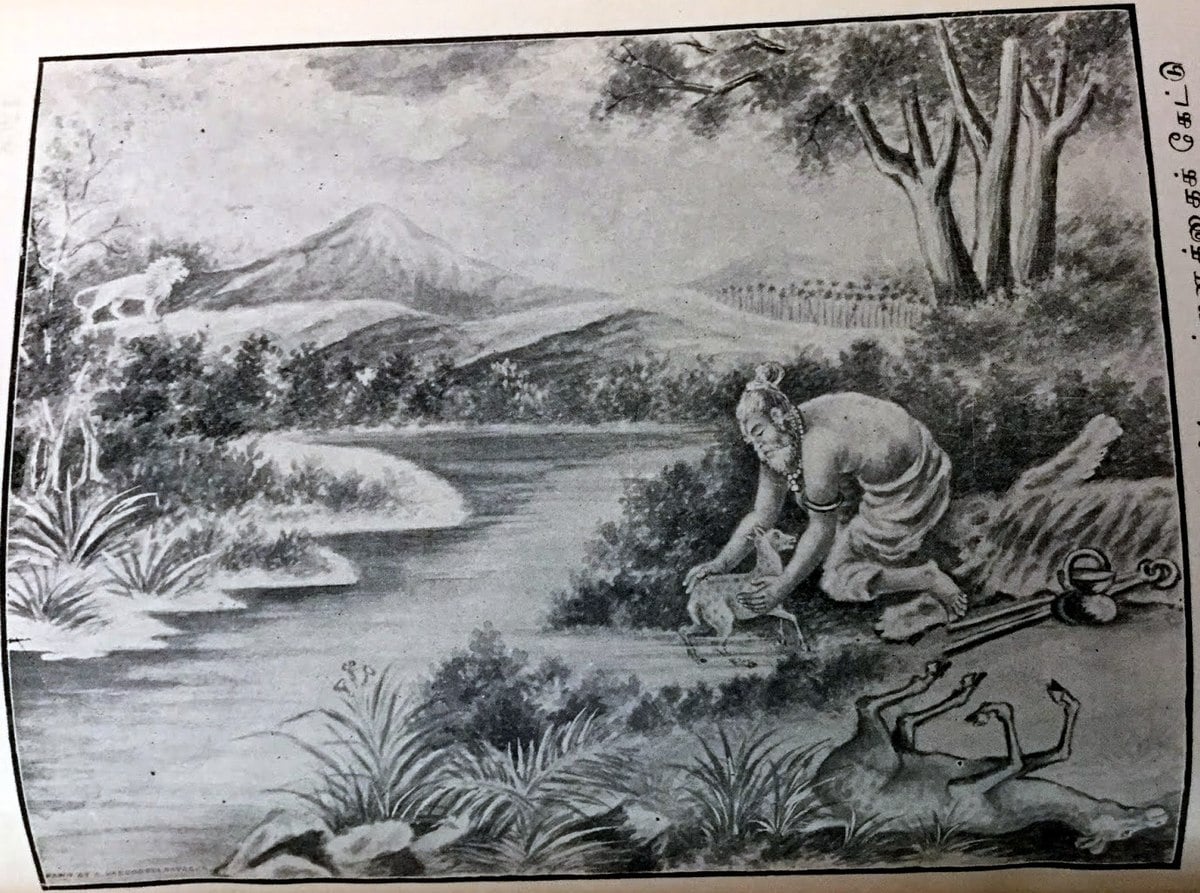
The Mahabharata, which literally means the Great Epic of the Bharata Dynasty, begins with an account of the genealogy of the – you guessed it! – Bharata dynasty. This dynasty’s history traces back to King Bharata, setting the foundation for the Kuru line.
From this lineage, two primary branches emerge: the Pandavas and the Kauravas. The text describes the unique and divine circumstances surrounding the birth of these princes, born to the brothers Pandu and Dhritarashtra and their wives, Kunti and Gandhari.
2. Early Lives and Education
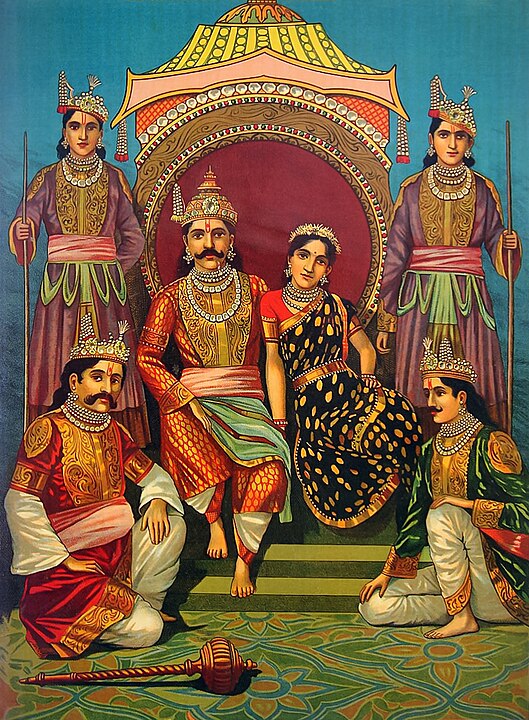
During their youth, the Pandavas and Kauravas received instruction in warfare and statecraft under the tutelage of their guru, Dronacharya. The skills of these princes are later exhibited in a grand ceremony.
However, this event also becomes a stage where the growing animosity and rivalry between the two sets of cousins become glaringly evident. This tension escalates further when the Kauravas conspire to eliminate the Pandavas by trapping them in a palace made of wax, the Lakshagraha.
The Pandavas, with their wits, manage to escape this fiery trap, but the Kurus thought that they were all dead. The five Pandava brothers had fled to the forest with their mother, Kunti, where they faced many hardships.
3. Draupadi’s Swayamvara
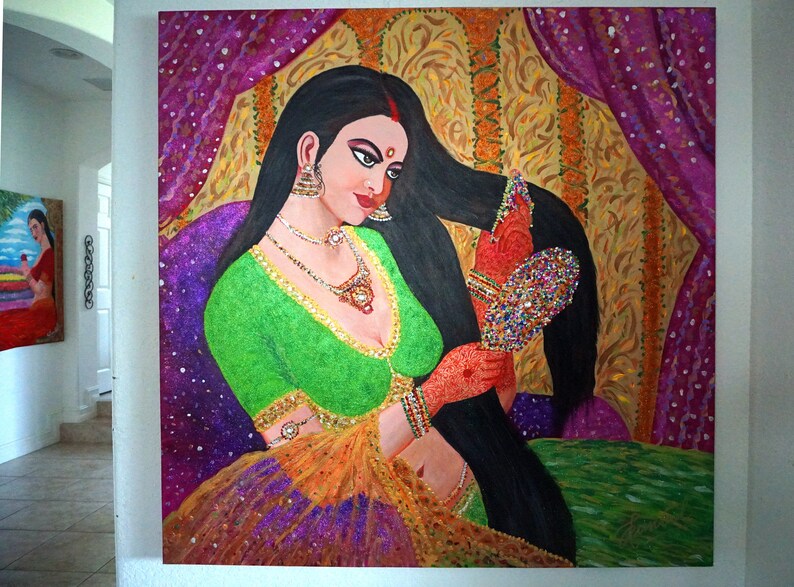
Draupadi, the princess of Panchala, holds a Swayamvara – an ancient practice where a princess selects her husband from an assembly of suitors. Princes from far and wide, including both the Kauravas and the Pandavas, attend the event.
The challenge involves stringing a colossal bow and shooting a target. Arjuna, the third Pandava, succeeds and wins Draupadi’s hand. However, due to an unexpected turn of events and a misunderstood command from their mother, Kunti, all five Pandava brothers end up marrying Draupadi.
Though at first much objection was raised, it was declared by Vyasa that such a marriage was allowable for these princes, and it was permitted.
4. Dice Game and Exile
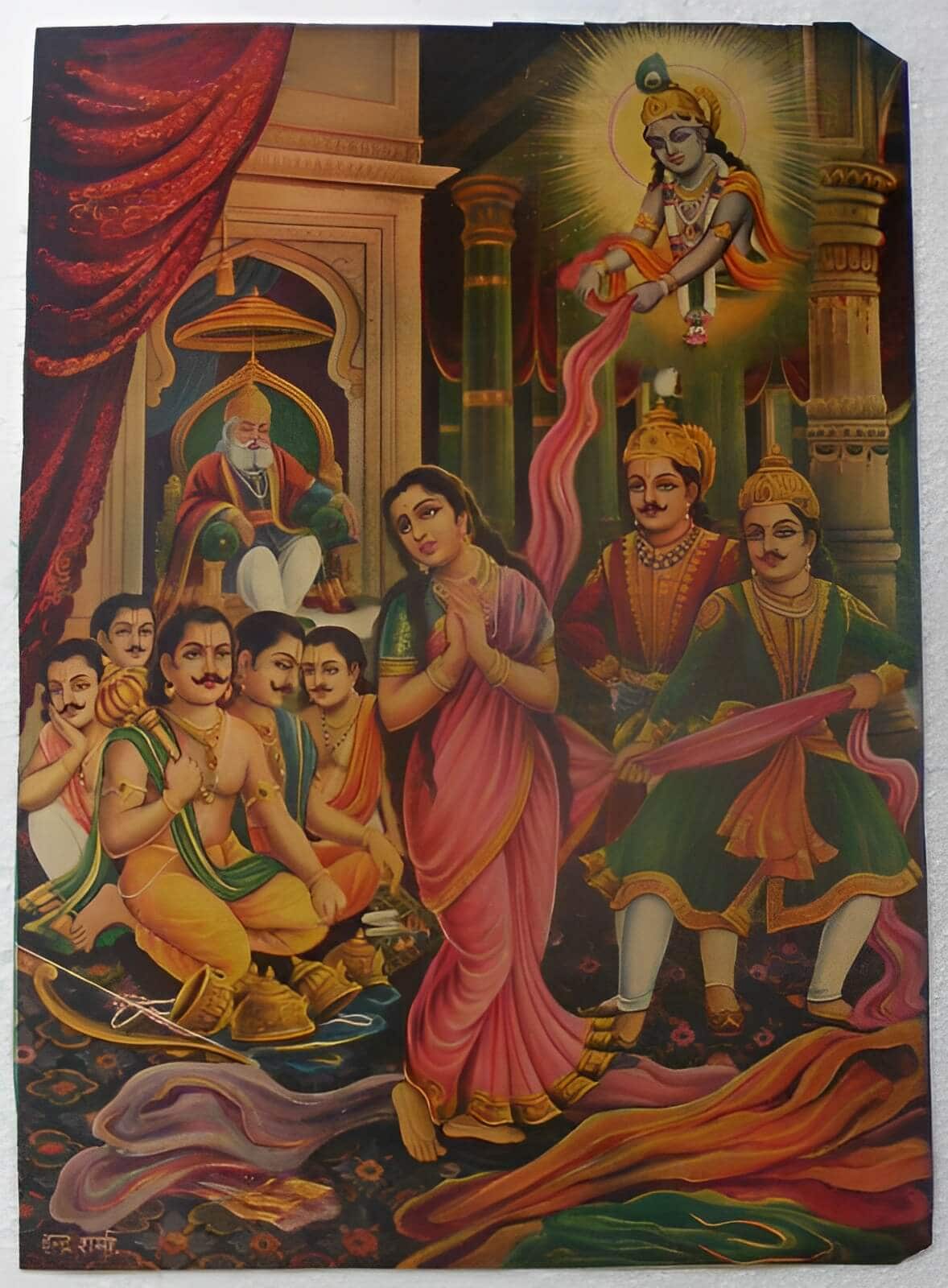
The Kauravas, unable to bear the increasing popularity and influence of the Pandavas, hatch a devious plan. Yudhishthira, the eldest Pandava, is lured into a game of dice, where, due to deceit and treachery, he gambles away his kingdom, his brothers, and even Draupadi.
This leads to one of the epic’s most poignant scenes: the humiliation of Draupadi in the Kaurava court. As a result of the dice game’s conditions, the Pandavas are sent into exile for 13 years. During this time, they undergo numerous adventures, gaining knowledge, weapons, and allies.
5. The Buildup to the War
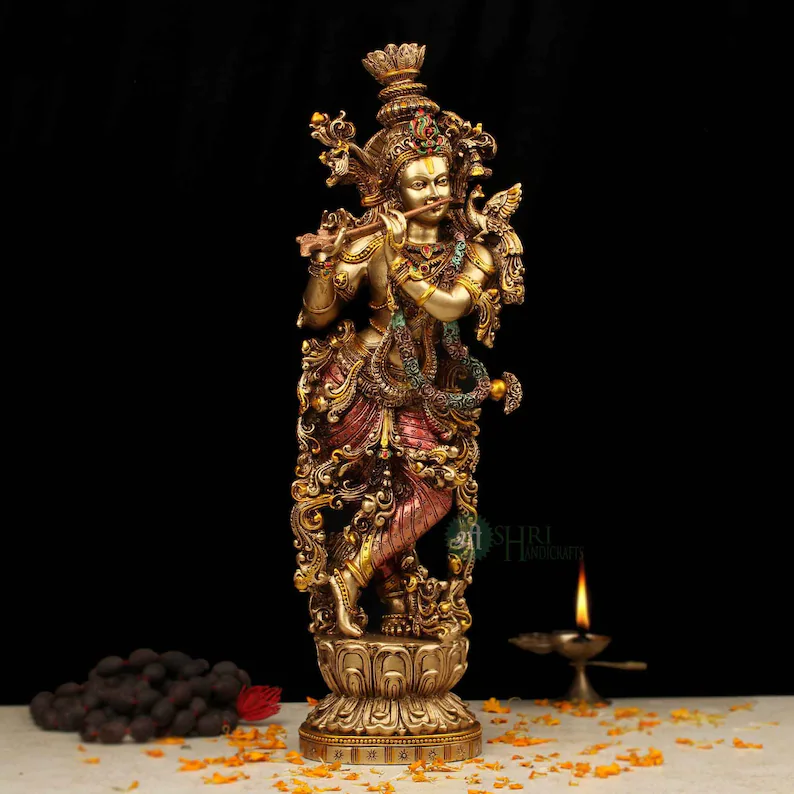
As the period of exile nears its end, the air is thick with the anticipation of conflict. Several attempts at mediating peace between the feuding cousins are made. Lord Krishna, a divine figure and an ally of the Pandavas, plays a crucial role in these negotiations. However, despite all efforts, the two factions remain on a collision course, leading to the massive battle of Kurukshetra.
6. The Great War – Kurukshetra
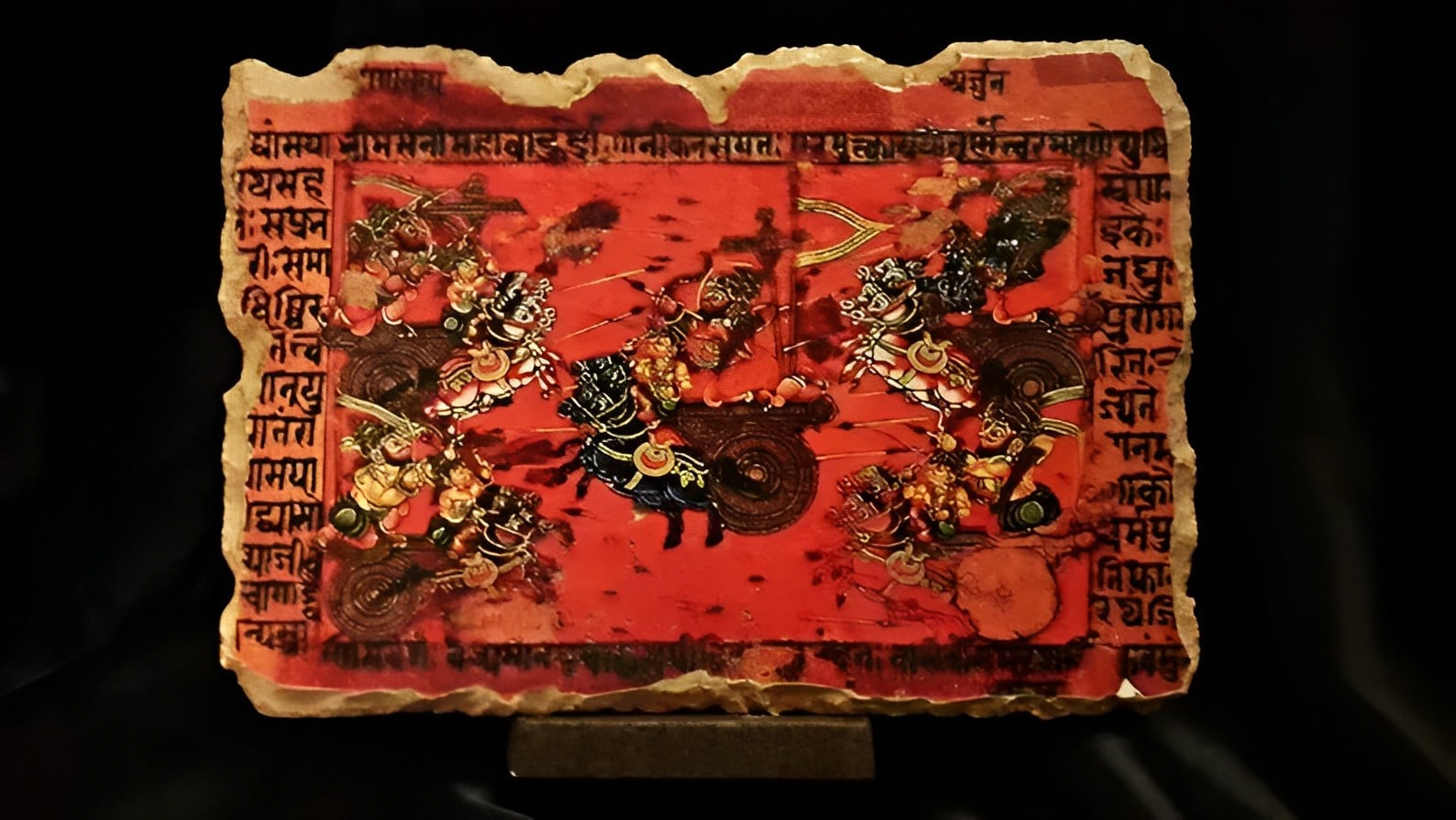
On the dawn of this cataclysmic war, Arjuna, witnessing his relatives in the opposing army, is struck by moral paralysis. How can he fight his own flesh and blood? His charioteer, Krishna, who is also a god incarnate, delivers a discourse on duty, righteousness, and the nature of life and death, guiding Arjuna to his destiny.
This section of the text is known as the Bhagavad Gita, one of the most important spiritual and philosophical texts in Hinduism. It’s one of the most important and revered texts, offering wisdom on duty, life, death, and spirituality.
The war lasted eighteen days, witnessing heroism, treachery, and the eventual decimation of the Kaurava forces, leaving the Pandavas as the tragic victors. The war ends with the victory of the Pandavas, but at a devastating cost. The kingdom is left in ruins, and the later parts of the text deal with the consequences of the war.
It follows the Pandavas’ journey post-war, their renunciation of the kingdom, and their eventual journey towards the Himalayas in search of heaven.
Is the Mahabharata a Historical Record?
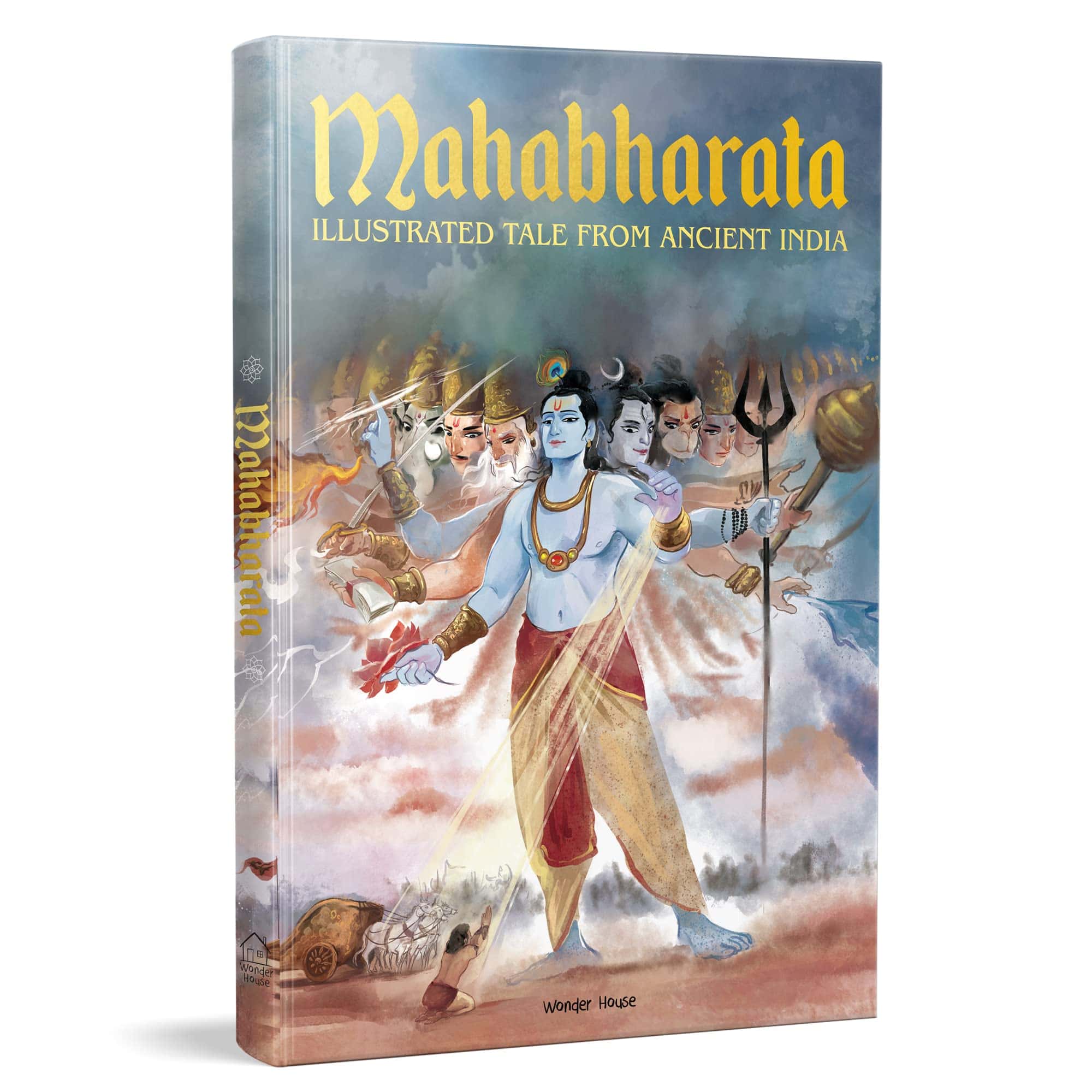
As an epic, the Mahabhara has fantastic larger-than-life heroes, supernatural events, divine interventions, and other fantastical elements. This makes it difficult to treat it as a straightforward historical record.
There might be some historical truth to the events that occur, but this is shrouded in mythical elements. We see this with most ancient epics, like the Iliad in Greek tradition or the tales of King Arthur in England. Were these real people. Did these things happen. We don’t really know.
Some scholars think that the main story of the Mahabharata might have some historical basis. There might have been a terrible conflict around which these tales were woven. And archaeologists have found evidence of some places mentioned in the text, which gives credence to this theory.
But the details in the text are likely embellished. After all, the Mahabharata has been written and rewritten over the centuries, and getting to the truth of the matter in such cases can be hard.
Who Wrote the Mahabharata?
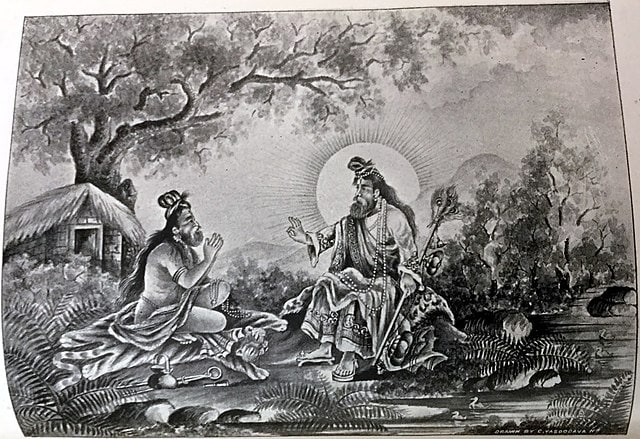
The core narrative, often referred to as the “Bharata,” might have been composed as early as the 8th or 9th century B C E. The final version, which includes the Bhagavad Gita, was likely completed by the 4th century C E.
So, who wrote this incredible text? Could one person have done this monumental work?
Traditionally, the sage Vyasa is credited with creating the Mahabharata. But scholars aren’t really sure if he was simply a symbolic figure representing a group of sages or a school of thought, or if he was an actual historical person.
In the Mahabharata itself, Vyasa plays an active role, both as a narrator and as a character who intervenes at crucial junctures.
Why Does the Mahabharata Endure?
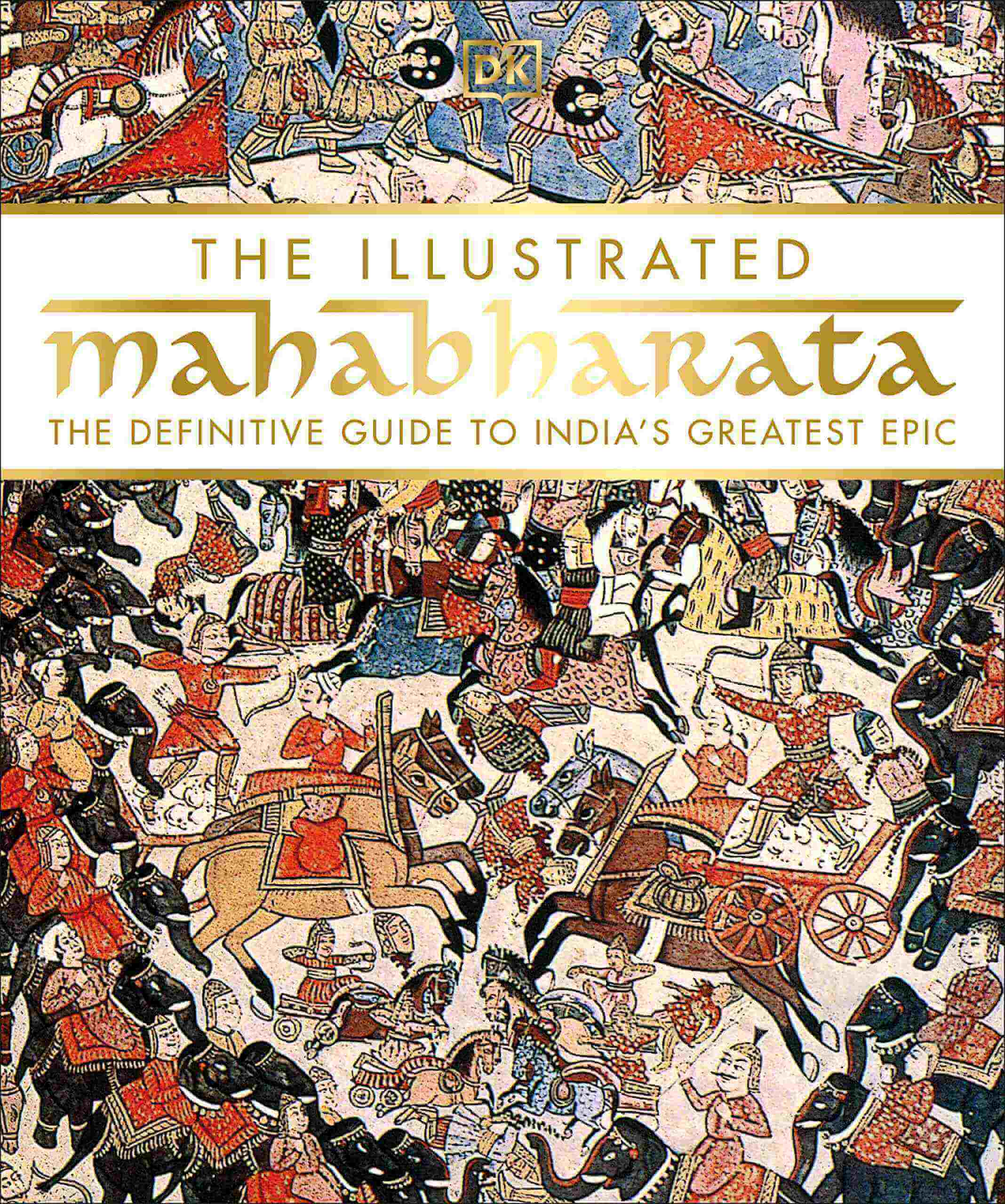
So, what makes the Mahabharata endure? Why is it so important to not just Hindus, but all those who are familiar with world literature? Well, at its heart, this isn’t just a story about a war. It’s rich in philosophical and ethical discourse and explores universal themes.
It deals with universal human concerns, such as duty (dharma), morality, the nature of good and evil, love, jealousy, power, and the consequences of one’s actions (karma). These themes resonate across time and cultures.
It’s also extremely nuanced. Unlike many other epics, the Mahabharata doesn’t offer a simple dichotomy of good vs. evil. Characters are multifaceted, displaying both virtuous and flawed traits, making them deeply relatable.
Wrapping Up
The Mahabharata is deeply woven into the fabric of Indian culture, morals, ethics, and religious beliefs. It has served as a guide for moral and spiritual instruction for centuries.
It’s interwoven with various rites of passage, festivals, and daily rituals. Its teachings are imparted to children, shaping moral and cultural values.
Rich in story, character, and philosophy, it offers insights that are as relevant today as they were thousands of years ago.
Related Articles
Symbols of India (With Images)
Common (and Bizarre) Superstitions in India
15 Powerful Hindu Symbols and What They Mean








